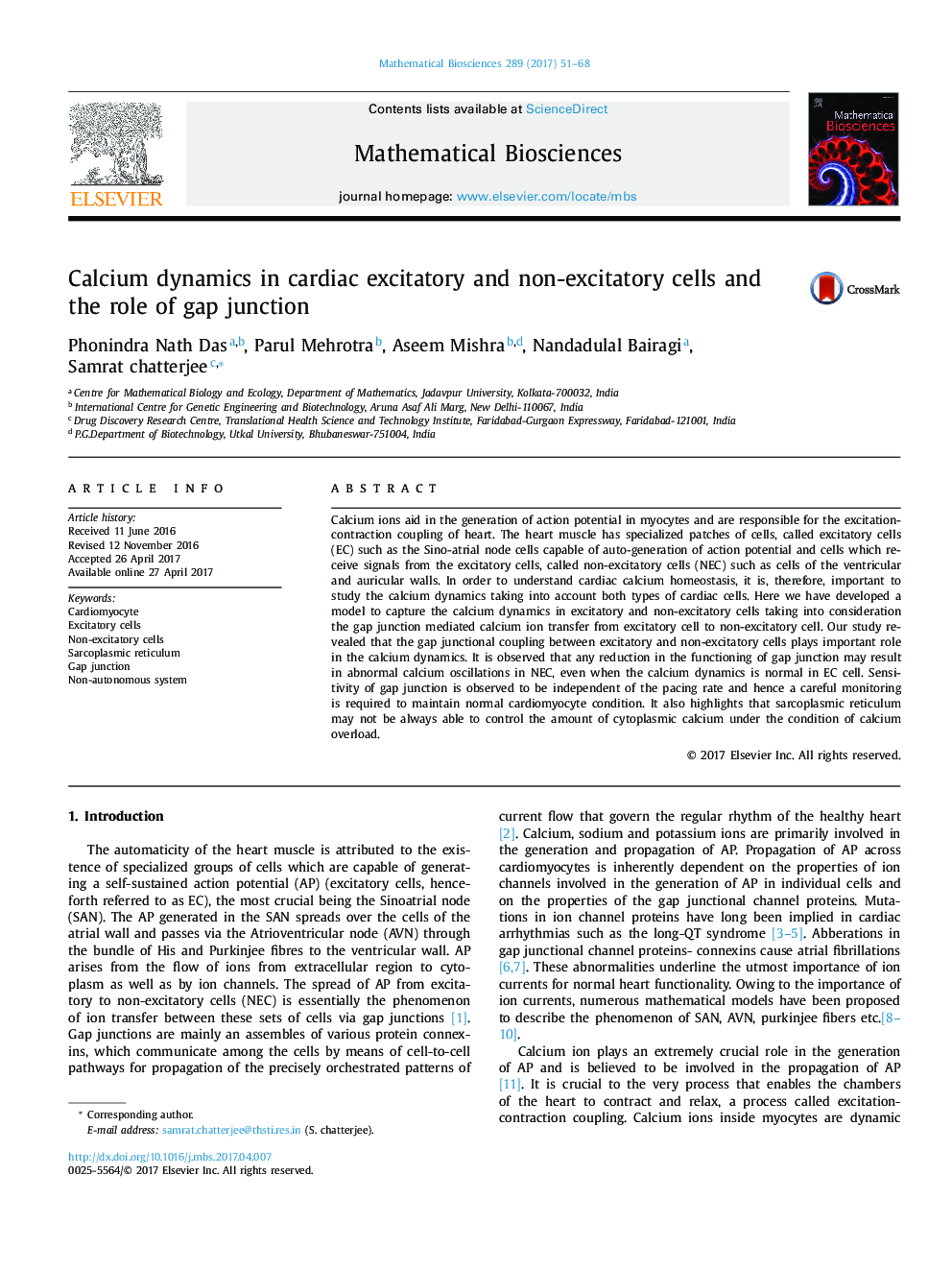| Article ID | Journal | Published Year | Pages | File Type |
|---|---|---|---|---|
| 5760498 | Mathematical Biosciences | 2017 | 18 Pages |
Abstract
Calcium ions aid in the generation of action potential in myocytes and are responsible for the excitation-contraction coupling of heart. The heart muscle has specialized patches of cells, called excitatory cells (EC) such as the Sino-atrial node cells capable of auto-generation of action potential and cells which receive signals from the excitatory cells, called non-excitatory cells (NEC) such as cells of the ventricular and auricular walls. In order to understand cardiac calcium homeostasis, it is, therefore, important to study the calcium dynamics taking into account both types of cardiac cells. Here we have developed a model to capture the calcium dynamics in excitatory and non-excitatory cells taking into consideration the gap junction mediated calcium ion transfer from excitatory cell to non-excitatory cell. Our study revealed that the gap junctional coupling between excitatory and non-excitatory cells plays important role in the calcium dynamics. It is observed that any reduction in the functioning of gap junction may result in abnormal calcium oscillations in NEC, even when the calcium dynamics is normal in EC cell. Sensitivity of gap junction is observed to be independent of the pacing rate and hence a careful monitoring is required to maintain normal cardiomyocyte condition. It also highlights that sarcoplasmic reticulum may not be always able to control the amount of cytoplasmic calcium under the condition of calcium overload.
Related Topics
Life Sciences
Agricultural and Biological Sciences
Agricultural and Biological Sciences (General)
Authors
Phonindra Nath Das, Parul Mehrotra, Aseem Mishra, Nandadulal Bairagi, Samrat chatterjee,
